Interested in joining the RBDA? Click here to fill in the short application.
Born A Hero Research Foundation
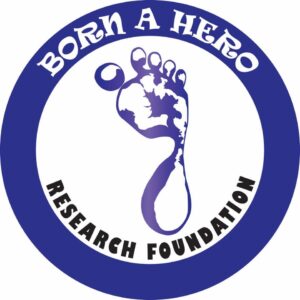
is a 501 (c)(3) nonprofit organization that was founded in 2016 as a support group for patients and families affected by Pfeiffer Syndrome, a craniofacial condition. At that time, we focused on health and social issues, but we soon realized that greater advocacy in research was needed.
Click to view more
In 2020, Born a Hero became a research foundation. We now study 20 Fibroblast Growth Factor Receptors (FGFR) Syndromes. Fibroblast Growth Factor Receptors play a major role in cranial skeletogenesis and in activating mutations of the human FGFR1, FGFR2, and FGFR3 genes that cause craniosynostosis.
Born a Hero Research Foundation’s mission is to accelerate innovation and research to improve the quality of life for patients with FGFR Syndromes. We focus on 20 rare genetic bone disorders because of the similarities they share. Through support groups, we have gathered that there are over 40 symptoms that may be associated with and common among patients affected by these disorders, but research in this area is lacking. Recognizing the value in having patient organizations own their own data, we are currently working to launch a research registry via NORD to fund research into FGFR Syndromes that will directly benefit affected patients.
Born a Hero Research Foundation also hosts the annual FGFR Syndromes- Collaborative Research Network Conference. This event brings together some of the most noted scientists and researchers in the FGFR Syndrome community from all over the world.
After experiencing the benefits of uniting stakeholders from the FGFR community, Born a Hero wanted to extend this to the entire rare disease community. Born a Hero has now become a leader in the rare disease community and hosts the Seattle Rare Disease Fair (www.rarediseasefair.com) in partnership with Seattle Children’s Research Institute to bring together all stakeholders involved in rare disease research. As a result of the success of the Fair, the NW Rare Disease Coalition (www.nwrare.org) was founded and lives under Born a Hero. It is comprised of several programs: WA Rare Disease Advisory Council (a piece of legislation they are currently trying to pass); Newborn Screening Program; Rural Rare Disease Community Project; Mental Health Program; Cell and Gene Therapy Education; and the Seattle Rare Disease Fair. These rare disease initiatives now help fund Born a Hero while simultaneously benefiting the rare community.
For more information:
Phone: 425-894-8448
Email: info@bornahero.org
The FD/MAS Alliance
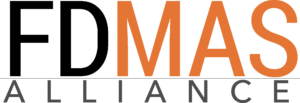
The FD/MAS Alliance is a community-led 501(c)(3) patient advocacy organization leading the fight against fibrous dysplasia and McCune-Albright syndrome (FD/MAS) through programs of research, education, and support. Founded in 2004 by families affected by FD/MAS, the organization is led by patients and caregivers and informed by scientific and medical advisory councils of renowned clinical experts and researchers in the disease field.
To learn more about FD/MAS Alliance, please contact Adrienne McBride, Executive Director, at amcbride@fibrousdysplasia.org or visit our website: www.fdmasAlliance.org
Research. Advocate. Collaborate.
Click to view more
Each and every day, we try to nurture close collaborative efforts between patients and our Scientific and Medical Advisory Councils. Their volunteer members include world-class scientists and clinicians with expertise in FD/MAS pathophysiology, metabolic bone disease, and endocrinology.
Living with a rare disease is tough, and more often than not, FD/MAS patients often struggle to find answers to questions about their condition and connect with clinicians with FD/MAS expertise. For more than 15 years, the FD/MAS Alliance has improved patients’ well-being through education, support, and research. Our recently revamped FD/MAS Alliance website provides patients with free educational content and the ability to contact and access members of the Medical Advisory Council and clinicians in their area equipped to evaluate and treat FD/MAS. Because patients are dispersed worldwide, FD/MAS Alliance exists primarily as an online community, regularly reaching thousands of patients and caregivers. Web-based educational programming helps patients navigate complex medical challenges and find experienced clinicians.
The name of this condition, FD/MAS can be confusing. Fibrous dysplasia (FD) and McCune-Albright syndrome (MAS) are debilitating diseases caused by a mutation of the same gene. FD is a condition in which bone is replaced by fibrous tissue, resulting in fractures, deformity, and pain. MAS is classically defined as the combination of FD, excess hormone levels, and cafe-au-lait birthmarks. An activating mutation of the same gene causes FD and MAS, and researchers have come to understand that both diseases exist on a spectrum. Patient experiences depend on when the mutation occurred during their development and how many different cell types in their body are affected. Diagnosis and treatment can be difficult. The mutation’s occurrence is uncommon and completely random, and cannot be inherited. FD/MAS affects people across gender, race, location, and socioeconomic backgrounds. We can address immediate needs, and more focused than ever, we are working to do more.
For more information:
PO Box 1199, 4701 Sangamore Rd Ste
100N, Bethesda, MD 20816-2558
Email: amcbride@fibrousdysplasia.org
GACI Global
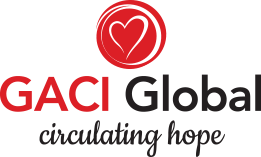
GACI Global GACI Global was founded as a 501(c)3 organization in 2019. The mission of GACI Global is to connect families affected by Generalized Arterial Calcification of Infancy (GACI) or Autosomal Recessive Hypophosphatemic Rickets Type 2 (ARHR2) caused by ENPP1 or ABCC6 Deficiencies to each other and to the medical community. The organization strives to provide current educational resources and supports ongoing research.
Click to view more
GACI is an ultra-rare genetic disease that primarily affects the circulatory system. It causes an abnormal buildup of calcium within the walls of the arteries that can reduce blood flow to vital organs. GACI occurs in roughly 1/200,000 births and usually affects infants during the first 6 month of life. GACI occurs in males and females equally in populations all across the world. In addition to arterial calcification, individuals with GACI can exhibit a variety of medical features including respiratory distress, gastrointestinal issues, joint calcification, hearing loss, high blood pressure, stroke and heart failure. The survival statistics for GACI are currently estimated to be around 50%. Those who survive GACI may develop a rare form of rickets known as ARHR2. This can result in bone and joint pain, bone deformities, dental problems, calcification of ligaments and short stature. Presently, there is no curative treatment available for GACI/ ARHR2. However, there have been significant advancements in GACI/ARHR2 research including early stage research to develop enzyme replacement therapy.
For more information:
Christine O’Brien Phone: +1-617-286-6202
Liz Molloy Phone: +353-87-2444488
Email: info@gaciglobal.org
Facebook: www.facebook.com/gaciglobal
Website: www.gaciglobal.org
International FOP Association
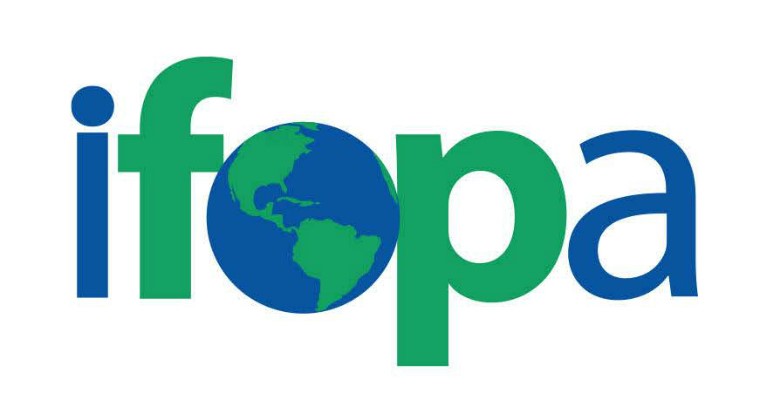
Fibrodysplasia ossificans Progressiva (FOP) is one of the rarest, most disabling genetic conditions known to medicine; it causes bone to form in muscles, tendons, ligaments and other connective tissues. Bridges of extra bone develop across joints, progressively restricting movement and forming a second skeleton that imprisons the body in bone. There are no other known examples in medicine of one normal organ system turning into another.
Click to view more
The International FOP Association (IFOPA) is a 501c3 nonprofit organization that was founded in 1988 by Jeannie Peeper, a young woman with FOP, whose goal was to bring people with FOP together. Within one year of our founding the very first family fundraiser was held. It started the IFOPA’s legacy of funding FOP research as we work to achieve our vision, a cure for FOP, accessible worldwide.
The IFOPA’s mission is to fund research to find a cure for FOP while supporting, connecting and advocating for individuals with FOP and their families, and raising awareness worldwide. In addition to funding research, we support, educate and advocate for people with FOP and their families worldwide. We also bring researchers, clinicians and pharmaceutical companies together to discuss important questions and challenges of developing a treatment for FOP. Our most significant initiative in support of research is the FOP Patient Registry – the largest and most in-depth database of clinical and medical information about FOP and those who are living with the disease. The Registry includes both a patient and medical portal, as well as a patient-reported outcomes survey. We also provide FOP grant funding through a competitive application process and offer an open-access FOP mouse model and FOP Biobank. Patient and family education and support include an annual Family Gathering, webinars, mentorship, and Resilient Living and Independent Living programs. The place to come to learn about FOP, find community and keep up with the latest FOP clinical studies and trials (there are currently eight FOP trials in various phases) is ifopa.org.
For more information:
1520 Clay St., Ste. H-2
North Kansas City, MO 64116 USA
Phone: 816-809-2772
Email: together@ifopa.org
The Jansen’s Foundation
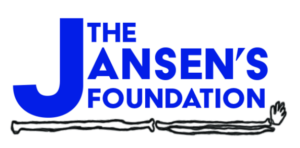
Jansen’s Metaphyseal Chondrodysplasia (JMC) is an extremely rare skeletal dysplasia characterized by progressive growth plate abnormalities that affect most of the long bones.
JMC is usually diagnosed during childhood, based on a combination of radiographic and biochemical abnormalities. However, some patients are not diagnosed until adulthood.
Click to view more
The limbs of affected individuals typically show progressive changes that are caused by an abnormal regulation of chondrocyte growth and differentiation, eventually leading to short and bowed legs. X-rays during infancy show demineralization and rickets-like metaphyseal changes. Fraying of the metaphyses is seen during childhood. Long bones do not grow normally and result in severely reduced adult height.
There is usually severe hypercalcemia and hypophosphatemia despite normal or undetectable serum levels of PTH or PTHrP.
Four different mutations in the gene encoding the PTH/PTHrP receptor (PTHR1) have been identified in several unrelated Jansen’s patients.
The mission of the Jansen’s Foundation is to bring awareness and support research in hopes of bringing about a cure to this debilitating skeletal condition.
For more information:
PO BOX 115, Elkhorn, NE, 68022
Phone: 402-457-9886
Email: neenan@.thejansensfoundation.org
Lymphangiomatosis &
Gorham’s Disease Alliance
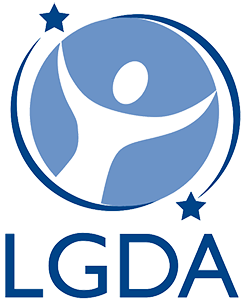
(LGDA) is a patient-support foundation concerned with a spectrum of complex lymphatic anomalies (CLA’s). CLA’s is an umbrella term encompassing four overlapping but distinct rare diseases of the lymphatic system: Gorham-Stout Disease (GSD); generalized lymphatic anomaly (GLA); kaposiform lymphangiomatosis (KLA); and central conducting lymphatic anomaly (CCLA).
Click to view more
CLA’s are characterized by growth of abnormal lymphatic tissue involving both soft tissue and bone leading to bone loss, chronic pain and debilitating conditions which can be fatal. They can present at any age, but mostly affect children and young adults. CLA’s do not show inheritability, and affect, with varying frequency, different bones – among them: the maxilla, mandible, clavicle, ribs, cervical vertebrae, femur and calvarium.
The LGDA focuses in two primary areas – patient support and research support. Through our continuing patient outreach we collect patient data in our International Lymphatic Malformation Registry www.lgdaregistry.org
Together with our biorepository, we promote and support collaboration among our international research network in conjunction with our research partner, the Lymphatic Malformation Institute www.lmiresearch.org. For information about the LGDA Patient Registry, Vascular Anomalies Centers, CaNVAS – the Consortium of Investigators of Vascular Anomalies, or our International Research Network contact: Lisa Klepper, lklepper@lgdalliance.org website: www.lgdalliance.org
For more information:
7901 4th St. North STE 5761
Saint Petersburg, Florida 33702
Email: lklepper@lgdalliance.org
Lymphatic Malformation
Institute (LMI)
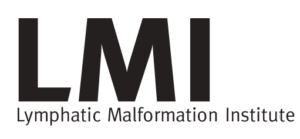
is dedicated to accelerating research and ultimately finding cures, for patients with Complex Lymphatic Anomalies (CLAs).
We support our global community of researchers, medical professionals and patients by offering information, networking and funding to generate hope and solutions
Click to view more
Complex Lymphatic Anomaly (CLA) is an umbrella term encompassing four overlapping but distinct rare diseases of the lymphatic system; Gorham Stout Disease (GSD); Generalized Lymphatic Anomaly (GLA); Kaposiform Lymphangiomatosis (KLA); and Central Conducting Lymphatic Anomaly (CCLA). CLAs are characterized by growth of abnormal lymphatic tissue involving both soft tissue and bone leading to chronic and debilitating conditions that can be fatal.
The LMI was established in 2010 to support research that drives our understanding of the pathobiology and genetics of CLAs. The institute also supports and funds clinical and translational research to better define the impact of CLAs on our patients, testing of new therapies and finding biomarkers of disease activity and treatment response.
LMI fosters an interactive and collaborative research community inclusive of patients and research and medical professionals, where our research drives improved quality of life and ultimately cures for patients with CLAs.
For more information:
Bethesda, MD, USA
Email: mdellinger@lmiresearch.org
Email: tferry@lmiresearch.org
Melorheostosis Association
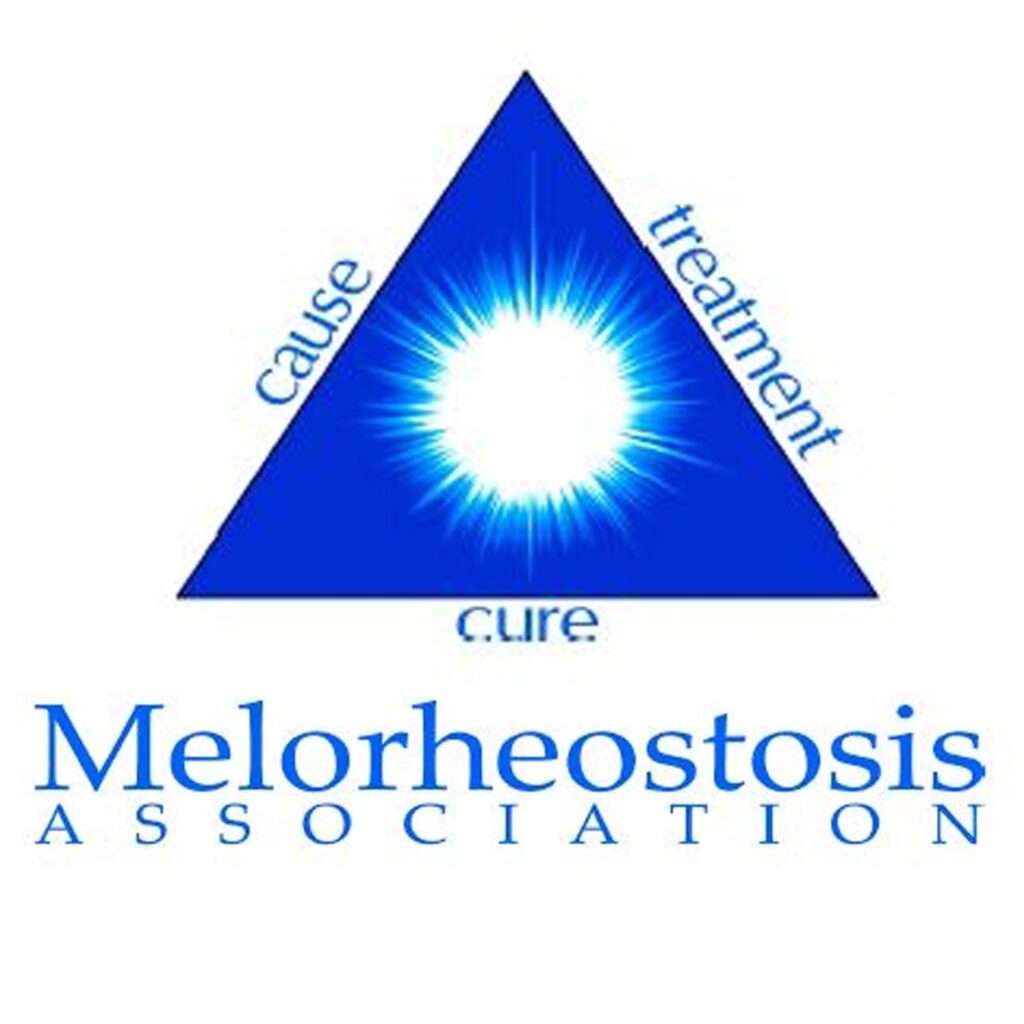
Melorheostosis Association Melorheostosis is a rare and progressive disorder characterized by hyperostosis (thickening) of the cortical bone. Melorheostosis affects both bone and soft tissue growth and development. Melorheostosis can result in severe functional limitation, extensive pain, soft tissue contractures, limb length inequality, and limb, hand and/or foot deformity.
The Melorheostosis Association is a 501(c)(3) not-for-profit organization dedicated to finding the cause, treatments and cure for Melorheostosis.
Click to view more
Melorheostosis is a rare and progressive disorder characterized by hyperostosis (thickening) of the cortical bone. Melorheostosis affects both bone and soft tissue growth and development.
Melorheostosis can result in severe functional limitation, extensive pain, soft tissue contractures, limb length inequality, and limb, hand and/or foot deformity. The age of diagnosis is typically based on the severity of onset and symptoms. On x-rays, the appearance of melorheostosis been likened to flowing, melted candle wax. Melorheostotic bone and soft tissue often do not react as unaffected tissue would to traditional surgical interventions. Melorheostosis patients are literally “One in a Million.”
The National Institutes of Health (NIH) is conducting a Long Term Study of Melorheostosis and has identified two genes which cause the majority of Melorheostosis cases — MAP2K1 and SMAD3. NIH has also contributed greatly to the published information on Melorheostosis. We are extremely grateful to NIH and every participating patient as NIH continues its invaluable work in 2020.
For more information:
410 East 50th Street,
New York, N.Y. 10022
Kathleen Harper, Founder and Chairman
Email: Kathleen@melorheostosis.org
The MHE Research Foundation
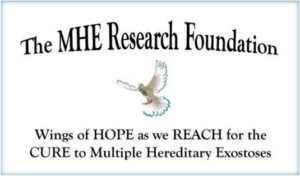
The MHE Research Foundation is a nonprofit 501 (c)(3) organization working in support of researchers, physicians and families dealing with Multiple Hereditary Exostoses / Multiple Osteochondroma Syndrome.
Click to view more
Multiple Hereditary Exostoses / Multiple Osteochondroma Syndrome is a genetic bone disorder in which benign cartilage-capped bone tumors form throughout the body. Some patients may have as few as two tumors, but most patients develop many more and the numbers of tumors can be in the hundreds.
Exostoses/Osteochondromas can cause numerous problems, including compression of peripheral nerves or blood vessels; irritation of tendons and muscles resulting in pain; loss of range of motion; skeletal deformity; short stature; limb length discrepancy; chronic pain and fatigue; mobility issues; early onset arthritis; an increased risk of developing malignant tumor transformation (chondro-sarcoma) reported risk of 2%-5% over life time and autism relevant behavioral phenotype. It is not uncommon for MHE/MO/HME patients to undergo numerous surgical procedures. Surgery, physical therapy and pain management are currently the only options available. The prevalence of MHE/MO/HME is 1/50,000.
Our Mission is to REACH:
Research – to support researchers in order to one day find a treatment/cure.
Education – to provide clinical information, to benefit both families and physicians.
Advocacy – to bring awareness about this disease throughout the world.
Clinical – to provide resources enabling families to locate the medical care.
Hope – the research, clinical care and informational resources will bring a better quality of life to the families affected by this disease.
For more information:
8019 Harbor View Terrace,
Brooklyn, NY 11209
Phone: 561-315-9149
Email: mhefuntasia@gmail.com
Osteogenesis
Imperfecta Foundation
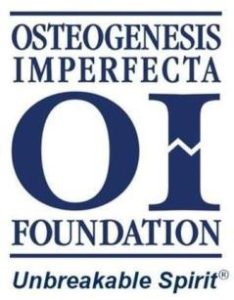
Osteogenesis Osteogenesis imperfecta (OI), also referred to as brittle bone disease, is a rare and variable genetic disorder that is characterized by fragile bones.
Click to view more
OI is caused by a mutation in a gene that affects bone formation, bone strength, and the structure of other tissues. The incidence of OI is approximately 1 in 15-20,000 live births. People with OI experience broken bones from infancy through puberty. The frequency typically decreases in the young adult years but may increase again later in life. Other than broken bones, respiratory issues including asthma are often seen. Short stature, rib cage deformities and spine curves can make breathing problems more severe. Other medical characteristics may include hearing loss, dental issues, loose joints, cardiac issues, and basilar invagination.
The OI Foundation is committed to the mission of improving the quality of life for individuals affected by OI through research to find treatments and a cure, education, awareness and mutual support. As a strong advocate for and partner of the Rare Disease Clinical Research Network’s Brittle Bone Disorders Consortium, the OI Foundation collaborates with physicians, researchers, and other medical advisors to accelerate a better understanding of OI and improve treatment options for people living with OI.
A few major activities of the OI Foundation include the OI Registry, national and regional conferences, meetings and resources for clinicians and medical professionals, and newsletters and podcasts for constituents. In partnership with the Rare Bone Disease Alliance, the OI Foundation hosts the monthly Rare Bone Disease teleECHO Clinic Series, an educational program designed to build capacity to better diagnose and treat rare bone diseases safely and effectively. The OI Foundation also hosts the OI teleECHO Clinic Series, which focuses on topics specific to osteogenesis imperfecta.
The OI Foundation is the only patient advocacy organization in the United States dedicated to meeting the needs of the approximately 50,000 people living with OI.
For more information:
656 Quince Orchard Rd., Suite 650
Gaithersburg, MD 20878
Phone: (844) 889-7579
Email: Bonelink@oif.org
The Osteopetrosis Society
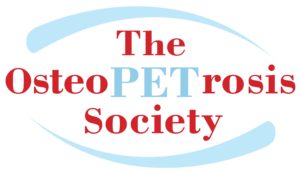
Osteopetrosis is a rare congenital bone disorder in which bones are abnormally dense and brittle. This results from an imbalance between the formation and breakdown in the normal maintenance of the bone. There are several types of osteopetrosis of varying severity. Symptoms often include frequent fractures, infections, and chronic anemia and blindness or deafness can occur.
Click to view more
The mission and purpose of The OsteoPETrosis Society is to provide education and support to patients and caregivers, as well as medical professionals who are dealing with osteopetrosis. In addition, we plan to support research into an osteopetrosis treatment and cure.
We hold annual patient meetings with informative sessions dealing with various aspects of the disease. Literature for people with osteopetrosis have been published. A Medical Advisory Panel, comprised of doctors with extensive knowledge and experience with osteopetrosis guide us in these goals and insure that our information is accurate.
For more information:
The Osteopetrosis Society
448 Mine Road, Asbury, NJ 08802
Email: patrick@osteopetrosis.org
Soft Bones
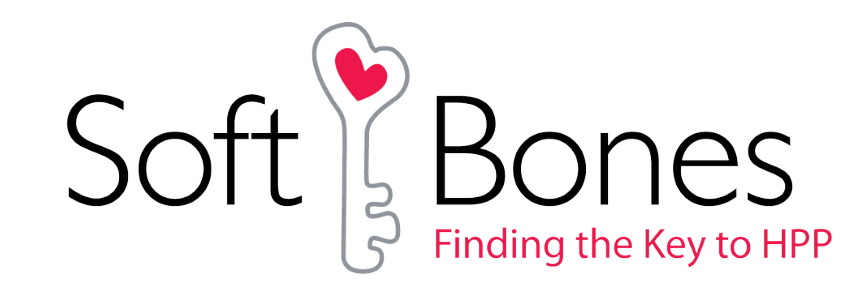
Hypophosphatasia is a genetic, ultra-rare, metabolic disease with a broad spectrum of symptoms that can have life-threatening consequences in severe cases. People with HPP have low levels of the enzyme alkaline phosphatase, which is largely known for its role in bone mineralization but has other functions in the body that researchers are still studying to better understand. While there is currently no cure for hypophosphatasia, bone-targeted enzyme replacement therapy is directed toward preventing or correcting skeletal symptoms or complications.
Click to view more
Hypophosphatasia is an inherited (genetic), ultra-rare, metabolic (chemical) bone disease of broad-ranging severity that causes life-threatening disease in approximately one per 100,000 live births. People with the condition have low levels of the enzyme alkaline phosphatase, which impairs the mineralization of bones. Normal mineralization is essential for hard and strong bones. Without it, bones become weak and soften and teeth may fall out prematurely. Depending on the severity of the skeletal disease, symptoms can include deformity of the limbs and chest, pneumonia, recurrent fractures, premature tooth loss and pain. While there is currently no cure for hypophosphatasia, treatment is directed towards preventing or correcting the symptoms or complications.
The Soft Bones Foundation catalyzes research of this rare bone disease through awareness, the CoRDS International Hypophosphatasia Contact Registry, and fundraising efforts. Soft Bones also advocates for access to treatment and educates lawmakers and brings attention to the needs and gaps in the care of patients affected by hypophosphatasia around the globe.
Soft Bones also advocates for access to treatment, educates lawmakers and brings attention to the needs and gaps in the care of patients affected by hypophosphatasia around the globe.
For more information:
The US Hypophosphatasia Foundation
141 Hawkins Place, #267
Boonton, NJ 07005, USA.
Phone: (973) 453-3093
Email: info@softbones.org
For more information visit www.SoftBones.org.
Sophie’s Neighborhood
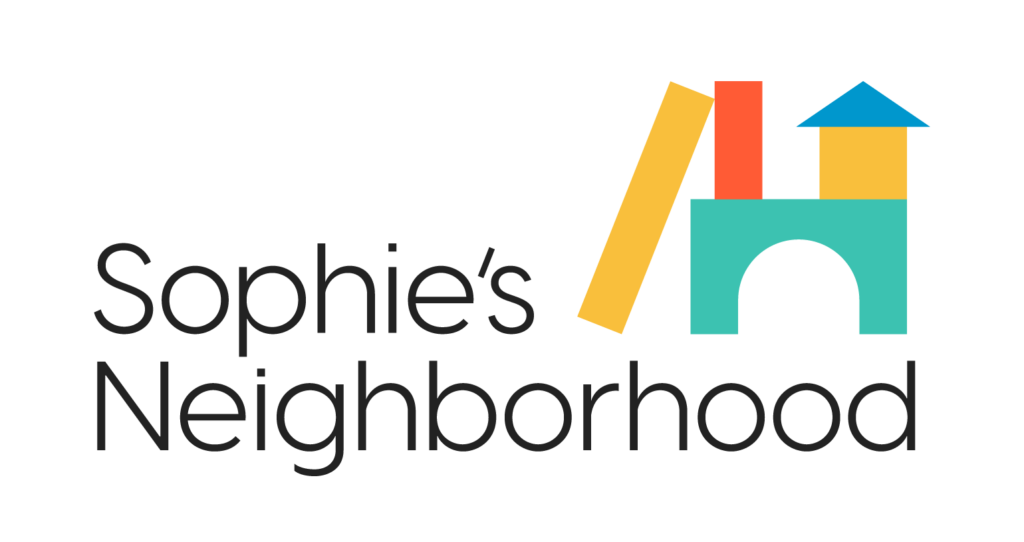
Sophie’s Neighborhood is a 501(c)(3) organization formed to promote research that will lead to an effective therapeutic or cure for a severely crippling bone and kidney disorder, Multicentric Carpotarsal Osteolysis Syndrome (“MCTO”).
MCTO is an ultra-rare genetic disorder affecting around 50 patients worldwide. It is caused by amino acid substitutions over a short domain in the MafB gene, in which all mutations appear within a section of 50 base pairs in the transactivation domain. Heterozygous, gain-of-function missense variants in the N-terminal transactivation domain cause the progressive disease phenotype.
For more information:
3215 5th Street Boulder, Colorado 80304, USA
Email: hello@sophiesneighborhood.org
Tin Soldiers Global for Patient Search
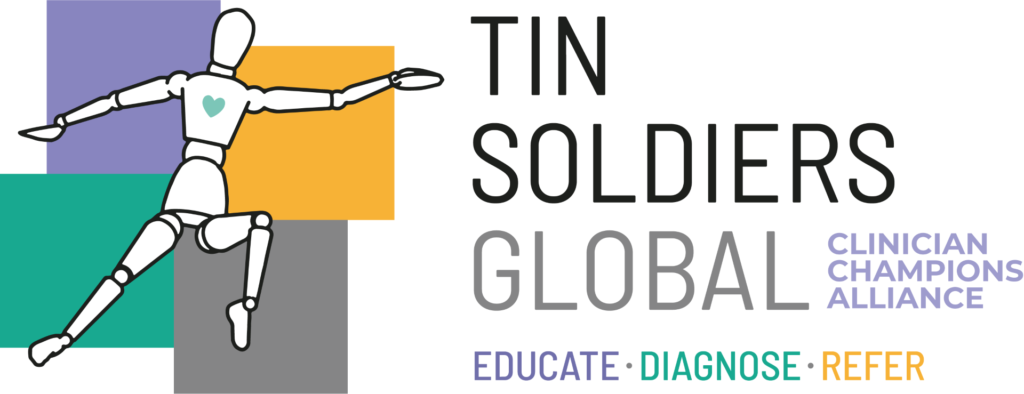
Tin Soldiers Global is a non-profit organization dedicated to identifying, diagnosing, and connecting people living with Fibrodysplasia Ossificans Progressiva (FOP) and other paediatric musculoskeletal conditions, to pathways of care. FOP is a rare genetic condition wherein ligaments and muscles progressively transform into bone, presenting a devastating impact. With an incidence rate of approximately one in one million births, an estimated 8000 individuals globally may have FOP, only around 800 are currently known. Our mission is to locate those missing or undiagnosed individuals and link them to the care they require.
Our ultimate goal is to establish a strong community of healthcare professionals committed to improving patient outcomes and advancing the field of musculoskeletal medicine, with a specific focus on FOP.
Click to view more
Children born with FOP progressively grow extra bone which forms a second skeleton – locking joints and ultimately impeding mobility. Given an incidence rate of approximately 1 in every 1 million births, the statistical expectation is that that there should be upwards of 7500 cases of FOP globally. However, only approximately 900 have been diagnosed. Our view is that the majority of the undiagnosed live in underserved communities. Tin Soldiers is focused on finding the ‘missing’, and to this end we have launched initiatives in Argentina, Brazil, India, Russia, South Africa, and Sweden.
Our strategy is to roll out a global multi-pronged awareness and education program. The program is aimed at specific audiences like health care professionals and the public, and is amplified through partnering with government departments, clinic networks, our health care network, patient support groups, faith base organizations and private business, who help us create an ‘army of eyes’ looking for those with FOP.
To date approximately 1100 healthcare professionals have been educated through our program and Tin Soldiers is directly responsible for finding and diagnosing 23 new FOP patients since its inception in 2020. Our educational programs lead with FOP but also encompass education on the PGAL system of diagnosing those with other rare bone conditions.
Tin Soldiers is a registered section 18A non-profit organization based in South Africa and operating globally. The program accepts donations directly at tinsoldiers.org or in partnership with the IFOPA for US citizens at ifopa.org/tinsoldiersfop
For more information:
Email: odette@tinsoldiers.org
XLH Network

X-linked hypophosphatemia is a rare bone disorder characterized by low serum phosphorus levels and poor bone mineralization. Symptoms may include lower limb deformities (bow or knock-knee), altered gait, short stature, spontaneous tooth abscesses, bone and muscle pain, arthritis, bone spurs, and tinnitus or hearing loss.
The XLH Network, Inc. began in 1996 as an informal collection of patients and families dealing with X-linked hypophosphatemia. Now a 501(c)3 nonprofit corporation, the organization connects affected families around the world with knowledgeable clinicians, active researchers, and up-to-date information on diagnosis and treatment.
Our mission is to promote XLH awareness and education for affected families, medical professionals, and the community at-large; to support physicians and other providers of medical care for better diagnosis and treatment; to create resources and a community for affected individuals and their families so they can understand and cope with the complications of the disease; and to foster the search for a cure.
Click to view more
The XLH Network, Inc. began in 1996 as an informal collection of patients and families dealing with X-linked hypophosphatemia. Now a 501(c)3 nonprofit corporation, the organization connects affected families around the world with knowledgeable clinicians, active researchers, and up-to-date information on diagnosis and treatment.
Our mission is to promote XLH awareness and education for affected families, medical professionals, and the community at-large; to support physicians and other providers of medical care for better diagnosis and treatment; to create resources and a community for affected individuals and their families so they can understand and cope with the complications of the disease; and to foster the search for a cure.
For more information:
Visit our website, www.XLHNetwork.org, or contact us at executivedirector@xlhnetwork.org. You can find us on Facebook at Facebook.com/XLHNetwork or follow us on Twitter @XLH_Network.
The XLH Network, Inc.
911 Central Ave., #161
Albany, NY 12206
Phone: 518-350-9541
Email: info@xlhnetwork.org
Forum: forum.xlhnetwork.org
Hypoparathyroidism Association
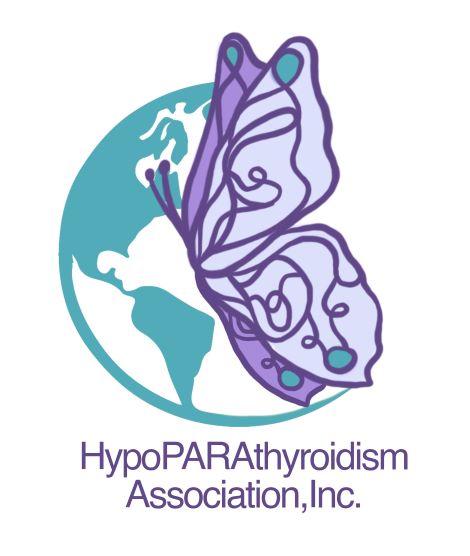
The HypoPARAthyroidism Association is a 501(c)3 organization dedicated to improving the lives of people impacted by hypoparathyroidism through education, support, research, and advocacy. Our founder James Sanders began the organization in 1996 and incorporated it in 1998. We now have members in 70+ countries.
HypoPARAthyroidism is characterized by low calcium levels AND low or absent parathyroid hormone (PTH). Over 100,000 people in the United States have hypoPARAthyroidism. The majority of people with hypoPARAthyroidism are female. Approximately 75% of people with hypoPARAthyroidism acquired the disorder after neck surgery. The other 25% of our population is made up of genetic, autoimmune, idiopathic (cause unknown), pseudo, pseudo-pseudo or a related disorder.
Explore our comprehensive resources on hypoparathyroidism at www.hypopara.org to learn more about this condition. From symptoms & treatments to causes and patient stories our subpages offer valuable information and insights into living with hypoparathyroidism as well resources to offer doctors and other stakeholders a better understanding of the disease.
For more information:
Michele Rayes – Associate Director
HypoPARAthyroidism Association
214-929-1986
Little People of America (LPA)

Little People of America (LPA) – Little People of America, Inc., is a national nonprofit organization that provides support and information to people of short stature and their families.
Short stature is generally caused by one of more than 400 medical conditions known as dwarfism. LPA welcomes all forms of dwarfism.
LPA has more than 7500 members across the United States and internationally. We have 13 districts and 70 chapters.
LPA provides social interaction, parent and peer support, medical support and education, scholarships and grants. Our members range from newborns to senior citizens, both little people and average height. Dwarfism spans all religions, ethnicities, and economic levels. All are welcome!
For more information:
Email: info@lpaonline.org
Website: www.lpaonline.org
